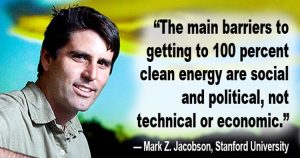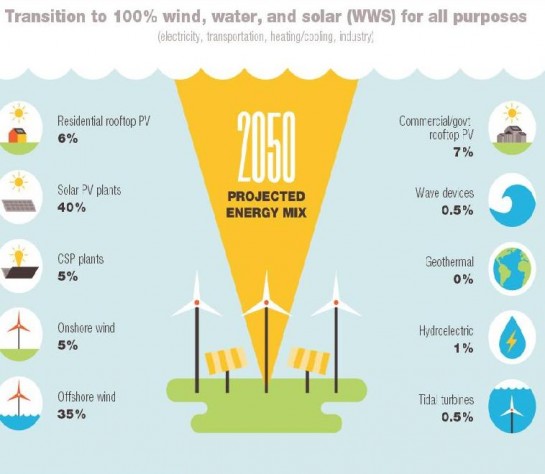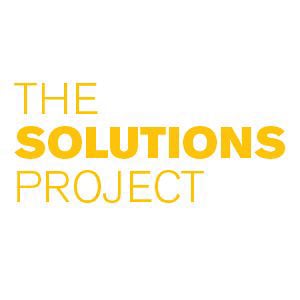As more countries are expanding their supply of clean energy, a fundamental question comes into our mind: would it be possible to run the entire world on renewable energy?
Someone at Stanford University think so! Professor Mark Z. Jacobson, a Professor of Civil and Environmental Engineering at Stanford University and director of the school’s Atmosphere and Energy Program, and his colleagues have developed a structured plan for 139 countries, including big polluter, to switch to 100 % clean, renewable energy generated from wind, water and sunlight for all purposes by 2050.
Many countries are going in this direction: Costa Rica run totally on renewable energy in 2015; Denmark recently hit 39.1% of its overall electricity from wind source; in the UK, wind generated electricity rose 15% from 24.5 terawatt-hours (TWh) hours to 28.1 TWh; nearly 26% Germany’s electricity supply in 2014 came from clean sources.
So what it may stop us from reaching the ambitious 100% goal? According to Professor Jacobson “The main barriers to getting to 100 percent clean energy are social and political, not technical or economic”.

Reporting his study, available at www.thesolutionsproject.org, in order to reach the “100 %” goal countries should obtain 19.4% of energy from onshore wind farms, 12.9% from offshore wind farms, 42.2% from photovoltaic systems, 5.6% from solar panels, 7.7% from concentrated solar power, 4.8% from hydroelectricity and 1.47% from geothermal, wave and tidal power

Moreover, the transition will generate 20 millions more jobs, it will prevent millions of death from pollution from fossil fuels, and it will dramatically reduce the anthropological climate change impact as just 0.3 % of the world’s land footprint would have to be devoted to energy production under a 100% clean energy scenario.
So we want it!
Someone may argues that anyway it will be to expensive to make the transition happen! Wrong!
“The implementation of the clean energy roadmap is both environmentally and economically feasible. By 2050 it would save about $600 billion dollars in health costs a year due to reduced air pollution and $3.3 trillion global warming costs. This would translate in yearly cost savings per head of around $8300” (Jacobson)
So what are we waiting for? As the solution is feasible, cheap and most of all inevitable! We should speed up!



